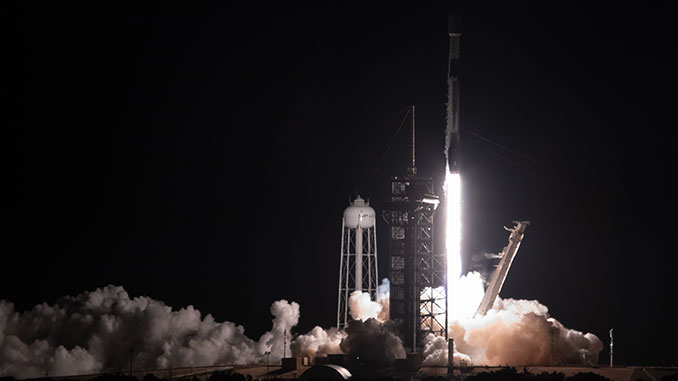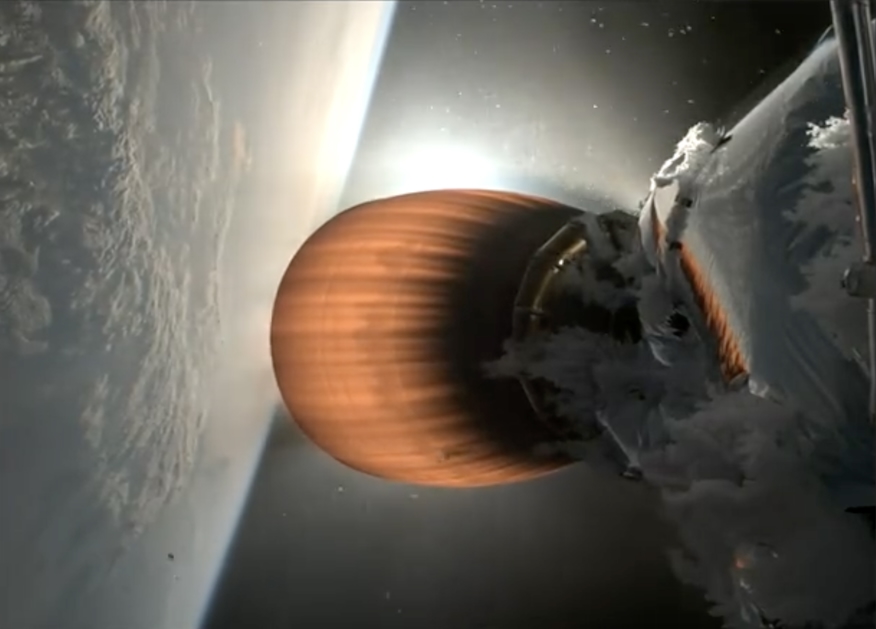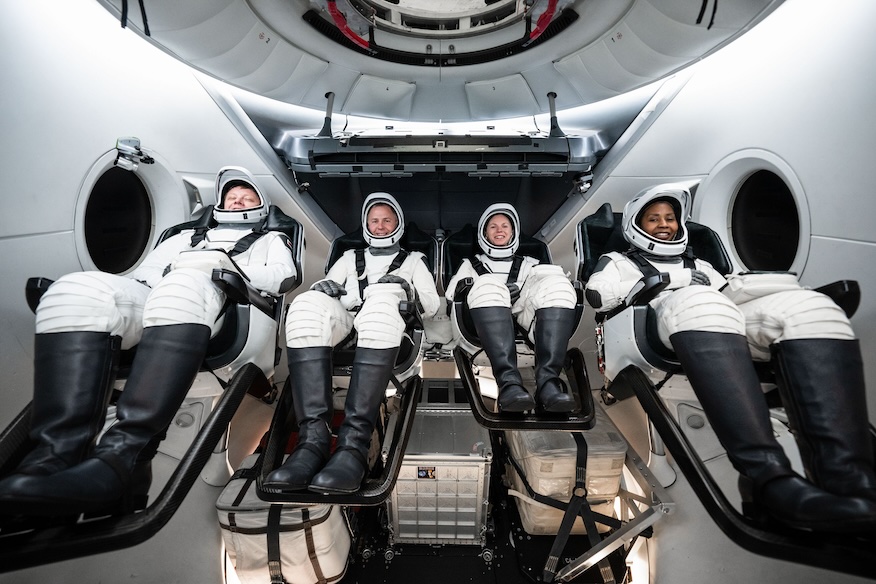
A two-week launch hiatus for SpaceX ended after midnight Saturday with the Starlink 10-9 mission that returned the Falcon 9 to flight after a July 11 launcher upper stage accident grounded the working rocket.
The Falcon 9 rocket lifted off from Launch Complex 39A at NASA’s Kennedy Space Center at 1:45 a.m. EDT (0545 UTC). The mission marked the 50th dedicated Starlink launch of 2024. Successful deployment of the payload was confirmed just over an hour after launch.
The Federal Aviation Administration, the agency that oversees commercial space activities in the United States, has cleared SpaceX to resume launches of its Falcon 9 rocket before a formal investigation into the crash is complete.
The FAA has approved SpaceX’s requested public safety determination, one of two paths a launch provider that suffers an accident during a mission can use to resume launching its rockets.
“After a thorough review, the FAA has determined that there was no public safety issue related to the anomaly that occurred during the SpaceX Starlink Group 9-3 launch on July 11,” the FAA said in a statement Thursday. “This public safety determination means the Falcon 9 vehicle can resume flight operations while the overall investigation remains open, provided all other licensing requirements are met.”
SpaceX’s Falcon 9 rocket, the world’s most widely used space launch vehicle, experienced a liquid oxygen leak on its upper stage during the Starlink 9-3 mission, which launched from Vandenberg Space Force Base in California on July 11. During its initial burn, viewers of the launch broadcast could see large amounts of ice build up around the rocket’s engine section.
“The cause of the leak has been identified as a crack in a pressure sensor sensing line attached to the vehicle’s oxygen system,” SpaceX wrote in a blog post Thursday. “This line cracked due to fatigue caused by high loading from engine vibration and loosening of the clamp that normally constrains the line.”
“Despite the leak, the second stage engine continued to operate throughout its first burn and completed engine shutdown, where it entered the coastal phase of the mission in the planned elliptical parking orbit.”
At a briefing Friday at NASA’s Johnson Space Center about the upcoming launch of the Crew-9 space shuttle, Sarah Walker, director of Dragon Mission Management for SpaceX, said the FAA has given the mission clearance to resume flights. She added that NASA has been involved throughout the process.
“In all the briefings and research that we did with the FAA, NASA had a formal say in participating in all of this,” Walker said. “We had a question-and-answer period where we shared more data and (the FAA) gave us their final decision yesterday that they agreed with our findings and that we were ready to resume flying.”
She said freezing around the engine section caused by the liquid oxygen leak caused the Merlin Vacuum engine to have a “hard start” due to slow distribution of ignition fluid into the chamber.
“This damaged the engine hardware and caused the upper stage to lose its steering ability,” Walker said.
Steve Stich, NASA’s commercial crew program manager, said they watched a video of that rough launch with SpaceX and it was instrumental in their investigation of the accident.
SpaceX said in its blog that neither the upper stage nor the Starlink satellites posed any danger to the public. Additionally, they noted that the first stage booster, tail number B1063, performed flawlessly, landing safely on the droneship, “Of Course I Still Love You,” just over eight minutes after liftoff.
The solution involves removing the problematic sensor, which had been left in that configuration from a previous customer mission. Stich said it was a lesson in “the attention to detail required in spaceflight.”
“Small changes matter. We looked at the change and we didn’t see any issues on the NASA side either,” Stich said. “So SpaceX did a great job of going back to that area and all the other areas of the vehicle that might have had the same issue and where you qualified by a little bit of similarity to what you had before, but maybe without having the extensive testing that you should have had.”
“So I think that’s a big lesson learned for all of us.”
To prevent a similar problem in the future, SpaceX decided to remove the problematic sensor, which Walker described as redundant with other sensors on the engine. The update was tested at its McGregor, Texas, facility.

The Falcon 9 upper stage that will support the Crew-9 mission will soon be tested there.
“It’s going to go through a second hot fire stage around July 30th and that will really verify some of the new modifications that this vehicle will have as a result of the anomaly,” Stich said.

Back to launch
The FAA’s decision clears the way for the resumption of launches of its workhorse rocket. Starting last weekend, SpaceX deployed multiple maritime assets to support launch operations. Its two Florida-based droneships were deployed along with recovery ships to retrieve payload fairings.
Two more launches could follow the return-to-flight mission, with Starlink Mission 10-4 scheduled for Space Launch Complex 40 (SLC-40) as well as Starlink Mission 9-4 from Vandenberg.
The resumption of launches is crucial not only for SpaceX’s Starlink constellation, but also for customers like NASA and the Polaris program. NASA is awaiting the launch of a Northrop Grumman Cygnus spacecraft for the NG-21 resupply mission to the International Space Station, followed by the flight of Crew-9 astronauts to the orbiting outpost.
Jared Isaacman and three other private astronauts are also waiting their turn to launch aboard the Crew Dragon Resilience on the Polaris Dawn mission, which will last about five days and will mark the first commercial spacewalk in history.
On Friday, NASA announced that the mission’s launch from LC-39A is not expected to occur before August 18, with a window of opportunity extending to early September. Stich said the timeline depends on how long it takes to convert that platform from a Falcon 9 to a Falcon Heavy configuration and allow its Europa Clipper to lift off on time in October.
SpaceX has several flagship missions planned for the second half of 2024, including the launch of the CRS-31 Cargo Dragon mission to the ISS around September.